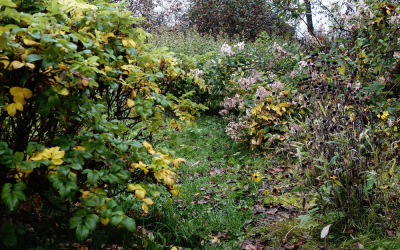Tree removal, while seemingly straightforward, is an intricate dance between necessity, safety, and sustainability. Understanding the “when” and “how” of responsible tree removal empowers us to make informed decisions and prioritise both human well-being and the environment.
When Does a Tree Need Removal?
Before the chainsaw hums, thorough evaluation of the tree is crucial. Not every blemish warrants removal. Trees are resilient beings, weathering storms and adapting to challenges but here are some key signs indicating a potential need for intervention:
Safety Hazards: Dead or diseased branches pose risks of falling and injury. Leaning trees threaten structures and power lines. Cracks, cavities, or extensive fungal growth signal structural weaknesses.
Disease and Infestation: Untreatable diseases can spread to neighbouring trees. Invasive pests like emerald ash borer necessitate proactive removal to contain the threat.
Infrastructure Interference: Roots can damage foundations, sewer lines, or driveways. Encroaching branches may obstruct power lines or pose maintenance challenges.
Development Needs: Construction projects sometimes require tree removal, but responsible alternatives like transplanting should be explored first.
Safety First: The Untouchable Rule of Tree Removal
Never underestimate the power and unpredictability of a falling tree. Here are non-negotiable safety measures:
- Never attempt DIY removal if you lack proper training and equipment. This applies especially to large trees, hazardous situations, or limited space.
Hire certified arborists or tree removal professionals. They possess the expertise, equipment, and safety protocols to ensure a controlled and risk-free process. - Clear the work area, first. Keep people, pets, and vehicles at a safe distance, following guidelines provided by the professionals.
- Do not stand under the tree or in its falling path. Always have a designated escape route clear of debris.
- Wear proper personal protective equipment (PPE). This includes a hard hat, eye protection, chainsaw chaps, gloves, and boots.
The Art of the Cut: Techniques for Responsible Tree Removal
Once safety measures are in place, professionals employ various techniques depending on the tree’s size, condition, and surrounding environment. Here are some common methods:
Felling: For healthy trees in open areas, felling involves precise cuts to direct the fall away from hazards. Professionals calculate lean, wind direction, and hinge size for a controlled descent.
Climbing and Dismantling: For large trees near structures or in confined spaces, arborists climb and dismantle the tree piece by piece, lowering sections safely to the ground.
Crane-Assisted Removal: Heavy machinery may be employed for particularly large or awkwardly positioned trees, minimising ground disturbance and ensuring precise placement of falling sections.
Beyond the Cut: Sustainable Practices for a Greener Goodbye
Responsible tree removal extends beyond the immediate task. Here’s how to minimise environmental impact and promote sustainability:
- Explore alternatives to removal first; can the tree be pruned, cabled, or treated for disease? Often, these interventions can extend a tree’s lifespan and preserve its benefits.
- Replant tree areas wisely. Choose native tree species suitable for your soil and climate, ensuring biodiversity and contributing to a healthy ecosystem.
- Repurpose the wood by considering options like chipping for mulch, firewood, or crafting beautiful furniture, giving the removed tree a new lease on life.
- Support local tree service companies. Choose those committed to sustainable practices, including proper disposal of wood waste and responsible sourcing of replacement trees.
Saying goodbye to a tree is a significant decision but by understanding the “when” and “how” of responsible removal, prioritising safety, and embracing sustainable practices, we can ensure the process honors the legacy of the tree while contributing to a healthier, greener future.
Ask a tree surgeon for advice
Remember, this blog is for informational purposes only and should not be construed as a substitute for professional advice. Always consult with a certified arborist or tree removal specialist before making any decisions about tree removal. Get in touch with us on our contact page if we can help you.



